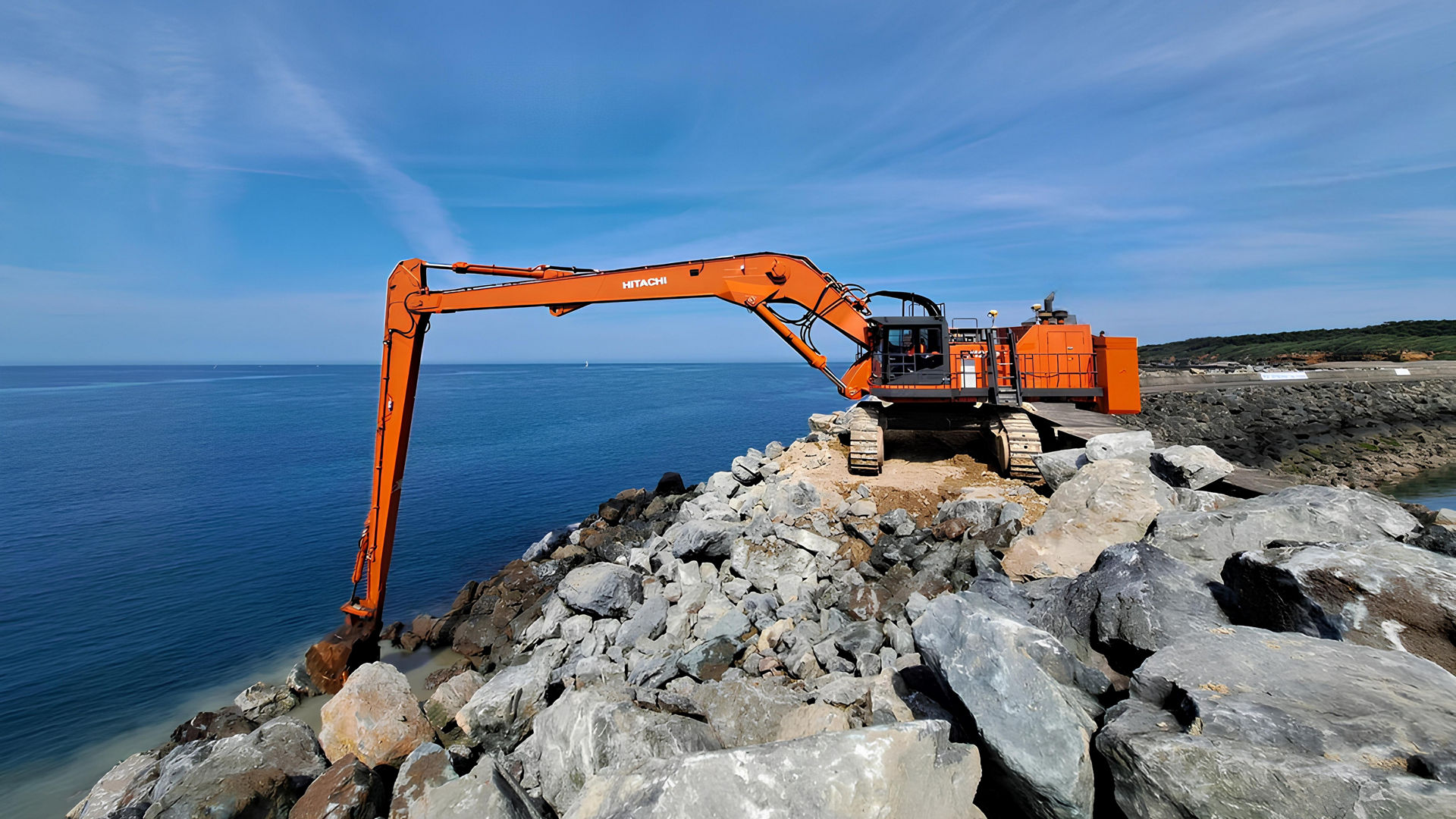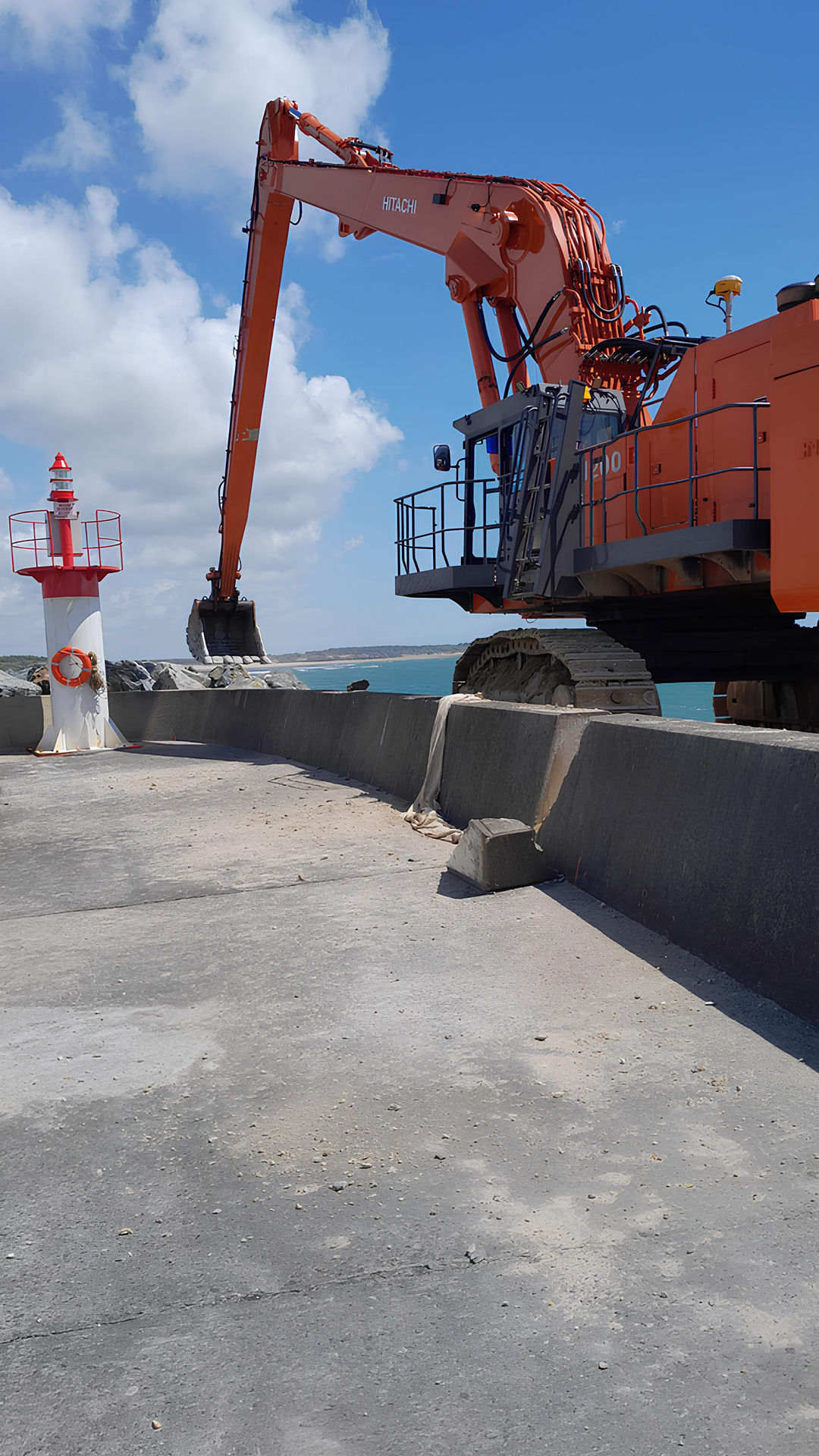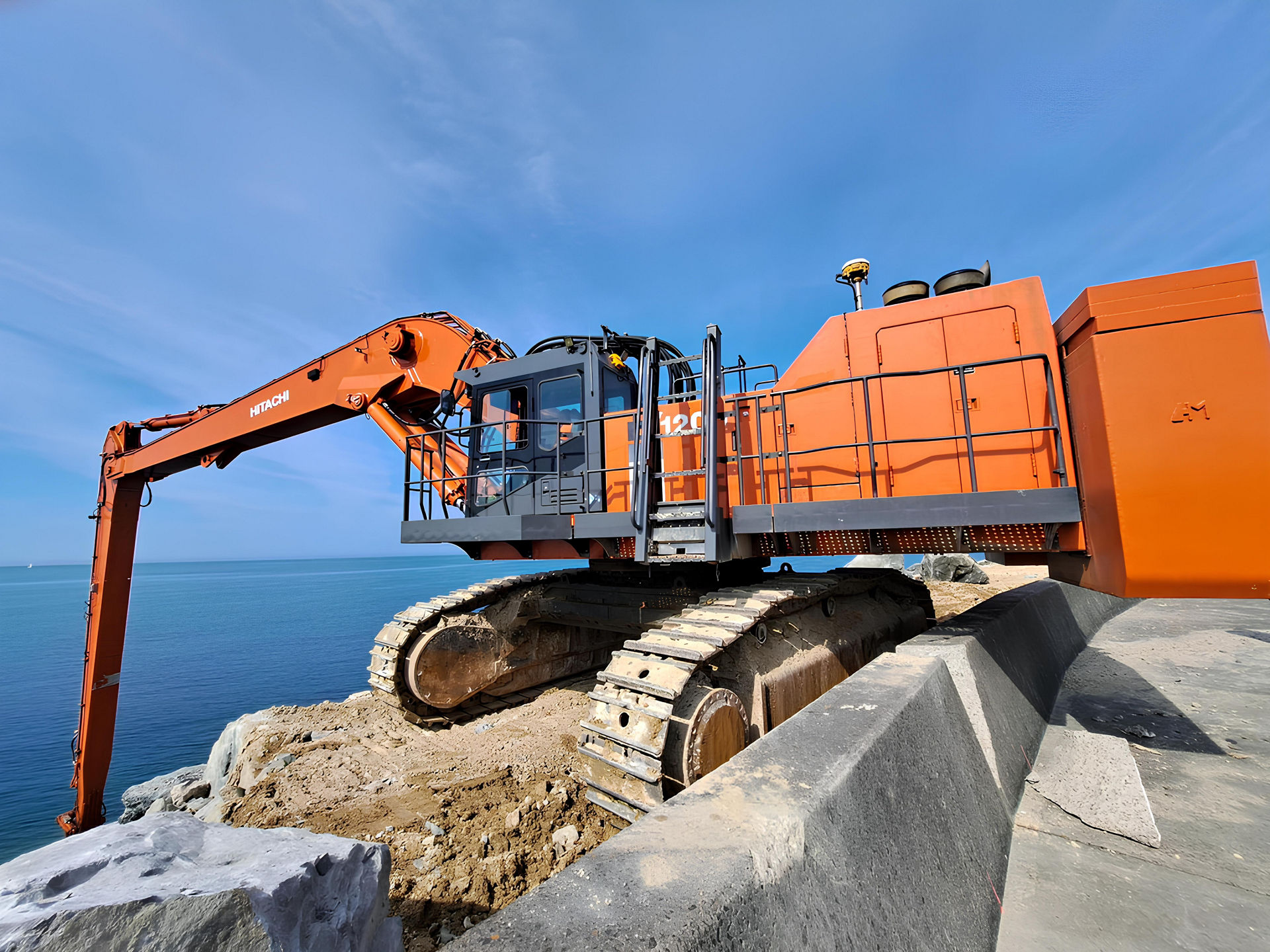Hitachi large excavator equipped for coastal protection projects

A super-long front excavator
An EX1200-6 excavator with super long front (SLF) has been equipped with a submersible 3D guidance system for marine work and coastal protection projects in north-west France. Its first job on the Atlantic coast involved lifting and placing seven-tonne concrete blocks from six metres below ground to a height of 22 metres in a flooded area. Subsequently, it will be used in the port of Le Havre, in a project that involves building a two-kilometre-long breakwater with 18,000 ‘accropod’ sea wall blocks.
A fleet of Hitachi machinery
The 114-tonne machine is owned by Besnier Aménagement in Brittany, a pioneer in the development of planned development zones (Zones d'Aménagement Concerté), maritime works and ecological engineering projects. Now a major player in the Grand Ouest region, the company has a fleet of more than 50 Hitachi machines, ranging from 40 to 150 tonnes. More than a third of these are equipped with new guidance systems, like the one supplied by Trimble for the EX1200-6.
The submersible guidance kit ensures the arm and bucket sensors are completely watertight, and allows the operator to submerge the boom in the water while precisely visualising the work area. On the monitor in the cab, the model is superimposed on the existing ground to give the operator a better understanding of the work to be done.

The EX1200-6 was delivered by Hitachi Construction Machinery France (HCMF) in April 2024 and began working one month later. According to Sébastien Coquelin, HCMF Product Marketing Manager, “These augmented reality guidance systems, whether from Trimble or Leica Geosystems, enable operators to view full-scale 3D models of the environment they are working on outside their field of vision from the cab, on a control screen.”
Superior visibility and safety
The main benefits of integrated technology such as this are enhanced safety and precision. The visibility of the bucket gives the operator better situational awareness to ensure the safety of people and objects in the vicinity. The system can also detect any pipe networks or buried/submerged objects that are not visible to the naked eye.
Another advantage of 3D guidance systems such as this one is that they ensure work is carried out precisely as planned, saving time and money. The on-board computer, via the control screen connected to the internet or a USB key, checks in real time that the work complies with the initial programme. Computer assistance eliminates the need for an on-site surveyor or topographer. As well as saving time, this also reduces the budget for each project, especially for smaller jobs.

The potential of machine guidance
For Besnier Aménagement, the 3D machine guidance systems on its Hitachi fleet represent a significant competitive advantage. “It is a major investment that pays off,” says Jean-Michel Besnier, Chairman and Managing Director. “Once in place, these systems save a considerable amount of time and provide a higher quality of work with enhanced safety. They are also increasingly in demand from our customers and are now included in most specifications.”
He also sees potential for machine guidance systems to be installed on the smaller 15-tonne Hitachi excavators in his fleet to work on ecological engineering sites. Wherever trees and branches need to be preserved on such projects, the guidance system would be essential. The number of requests for these projects is multiplying rapidly, he confirmed.
Why stop reading now? Others also liked:

Subscribe
Keep up to date with the latest news from Hitachi Construction Machinery (Europe) NV (HCME).



